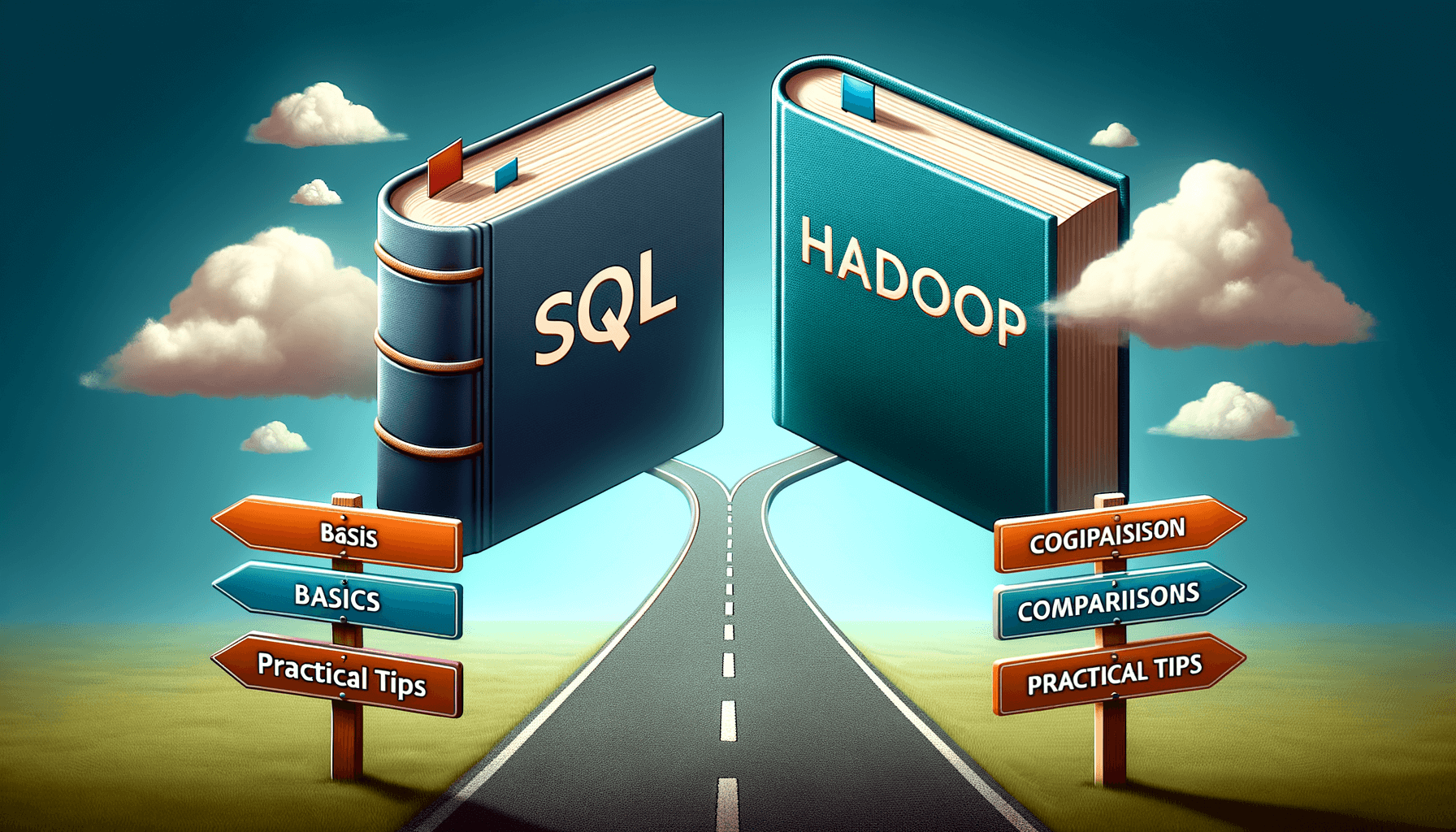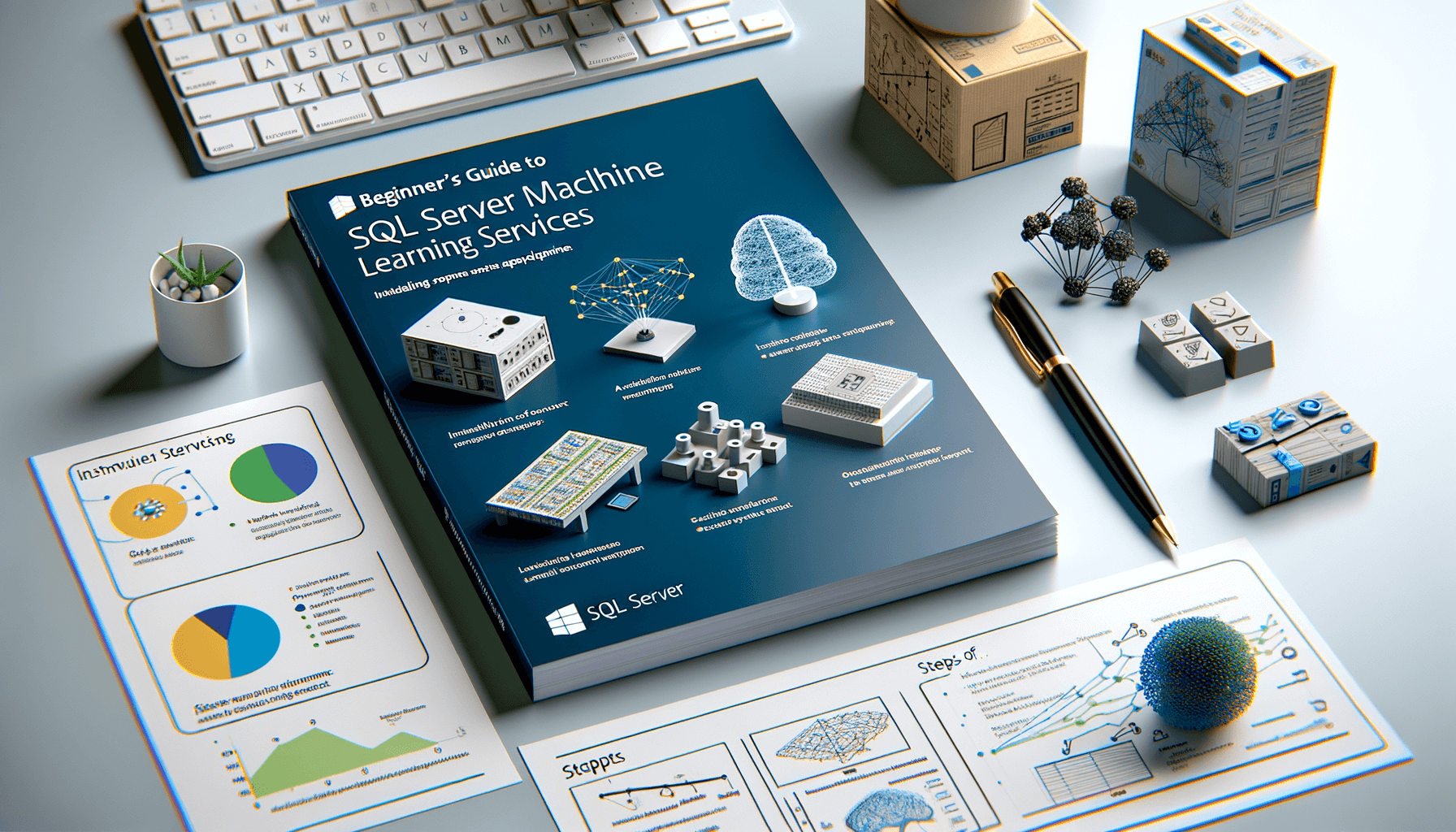A big variety of articles and resources

Unlocking the Power of SQL Machine Learning: A Comprehensive Guide
 Sia Author and Instructor
Learn SQL
Sia Author and Instructor
Learn SQL
11 minute read
SQL machine learning is a game-changer in the world of data science. It combines the power of SQL, a popular database language, with the capabilities of machine learning. This guide will walk you through how SQL machine learning works, how to set it up, and how it can be used in real-world situations.
Key Takeaways
- SQL machine learning blends SQL and machine learning to analyze data more effectively.
- You can integrate machine learning with SQL databases using special SQL extensions and libraries.
- Preparing data in SQL involves cleaning, feature engineering, and handling missing data.
- Building and training models in SQL require choosing the right model, using training algorithms, and optimizing them.
- Deploying and managing SQL machine learning models involve strategies for deployment, monitoring, and scaling.
Foundations of SQL Machine Learning
Historical Context and Evolution
SQL machine learning has a rich history that dates back to the early days of database management systems. Initially, databases were used solely for storing and retrieving data. However, as the need for more complex data analysis grew, the integration of machine learning techniques into SQL became a natural progression. This evolution has allowed us to perform advanced analytics directly within the database, reducing the need for data movement and improving efficiency.
Core Concepts and Terminology
Understanding SQL machine learning requires familiarity with several key concepts and terms. At its core, SQL machine learning involves using SQL queries to perform machine learning tasks such as classification, regression, and clustering. Key terms include features, which are the input variables used in the model, and labels, which are the output variables the model is trying to predict. Other important concepts include training data, which is the dataset used to train the model, and test data, which is used to evaluate the model's performance.
Importance in Modern Data Science
In today's data-driven world, SQL machine learning plays a crucial role in modern data science. By integrating machine learning capabilities directly into SQL databases, we can streamline the data analysis process and make it more accessible to a wider range of users. This integration allows data scientists to leverage the power of SQL for data manipulation and the power of machine learning for predictive analytics, all within a single environment. Ultimately, this leads to more efficient workflows and faster insights.
Integrating Machine Learning with SQL Databases
Integrating machine learning with SQL databases has become a game-changer in data science. By combining the power of SQL with machine learning, we can unlock new insights and make data-driven decisions more effectively.
SQL Extensions for Machine Learning
SQL extensions for machine learning allow us to perform complex analyses directly within the database. These extensions provide functions and procedures that simplify the process of building and deploying models. This integration reduces the need for data movement, making the workflow more efficient.
Popular SQL Machine Learning Libraries
Several libraries have emerged to support machine learning in SQL environments. Libraries like BigQuery ML, SQL Server Machine Learning Services, and PostgreSQL's MADlib offer robust tools for data scientists. These libraries enable us to leverage the familiarity of SQL while applying advanced machine learning techniques.
Case Studies of Successful Integration
Numerous organizations have successfully integrated machine learning with SQL databases. For instance, a retail company used SQL-based machine learning to optimize inventory management, resulting in significant cost savings. Another example is a financial institution that improved fraud detection by incorporating machine learning models into their SQL databases.
By integrating machine learning with SQL, we can streamline our data processes and enhance our analytical capabilities, leading to more informed business decisions.
Data Preparation Techniques in SQL
Data Cleaning and Preprocessing
In our journey to unlock the power of SQL machine learning, we must first focus on data cleaning and preprocessing. This step is crucial as it ensures the quality and reliability of our data. We often use SQL's grouping, filtering, and numeric filters to refine our datasets. These tools help us remove inconsistencies and errors, making our data ready for advanced analytics.
Feature Engineering with SQL
Feature engineering is another vital step in data preparation. By creating new features from existing data, we can enhance the performance of our machine learning models. SQL provides various functions and operations that allow us to manipulate and transform data effectively. This process not only improves the model's accuracy but also makes it more robust.
Handling Missing Data
Handling missing data is a common challenge in data preparation. In SQL, we have several techniques to address this issue. We can use methods like imputation, where missing values are replaced with estimated ones, or simply remove rows with missing data. The choice of method depends on the nature of the data and the specific requirements of the analysis.
Proper data preparation is the foundation of any successful machine learning project. By mastering these techniques, we can ensure that our models are built on solid ground.
Building and Training Machine Learning Models in SQL
Model Selection and Evaluation
When we start building machine learning models in SQL, the first step is to choose the right model. This choice depends on the problem we are trying to solve. For example, if we want to predict a number, we might use a regression model. If we want to classify items into categories, we might use a classification model. Choosing the right model is crucial because it affects the accuracy and performance of our predictions.
Training Algorithms Supported by SQL
SQL databases support various training algorithms. These algorithms help us find patterns in our data. Some common algorithms include linear regression, decision trees, and clustering. Each algorithm has its strengths and weaknesses. For instance, linear regression is simple and fast, but it might not capture complex patterns. Decision trees are more flexible but can be slower. We need to understand these differences to pick the best algorithm for our needs.
Optimization Techniques
Once we have chosen a model and an algorithm, we need to optimize it. Optimization means making the model as accurate as possible. We can do this by adjusting the model's parameters. For example, in a decision tree, we might change the depth of the tree. In linear regression, we might adjust the learning rate. These adjustments help the model learn better from the data. Optimization is an ongoing process, and we might need to try different settings to get the best results.
In our journey to build effective machine learning models, understanding the basics of model selection, training algorithms, and optimization techniques is essential. This knowledge helps us create models that can make accurate predictions and provide valuable insights.
Deploying and Managing Machine Learning Models in SQL Environments
Model Deployment Strategies
Deploying machine learning models within SQL environments requires careful planning. We need to consider the infrastructure, the type of model, and the expected load. Choosing the right deployment strategy is crucial for ensuring that the model performs well in real-time scenarios. Common strategies include batch processing, real-time scoring, and hybrid approaches.
Monitoring and Maintenance
Once a model is deployed, continuous monitoring is essential. We must track performance metrics to ensure the model remains accurate and efficient. Regular maintenance tasks include updating the model with new data, retraining it periodically, and fixing any issues that arise. A well-maintained model can adapt to changing data patterns and maintain its effectiveness over time.
Scalability Considerations
Scalability is a key factor when managing machine learning models in SQL environments. As data volumes grow, the system must handle increased loads without compromising performance. Techniques such as partitioning, indexing, and parallel processing can help achieve scalability. It's important to design the system with future growth in mind to avoid bottlenecks and ensure smooth operation.
Real-World Applications of SQL Machine Learning
Predictive Analytics
Predictive analytics is one of the most common uses of SQL machine learning. By analyzing historical data, we can forecast future trends and behaviors. This helps businesses make informed decisions. Predictive models can identify patterns that are not immediately obvious, providing a competitive edge.
Customer Segmentation
Customer segmentation involves dividing a customer base into distinct groups based on specific criteria. Using SQL machine learning, we can analyze customer data to create these segments. This allows for more targeted marketing strategies and personalized customer experiences.
Fraud Detection
Fraud detection is crucial for financial institutions and online businesses. SQL machine learning models can analyze transaction data in real-time to identify suspicious activities. By detecting anomalies, these models help prevent fraudulent transactions and protect both businesses and customers.
SQL machine learning is transforming how we approach data-driven decision-making. Its applications are vast and varied, offering solutions to complex problems across different industries.
Future Trends and Innovations in SQL Machine Learning
Advancements in SQL Technologies
As we look ahead, SQL technologies are evolving rapidly. New extensions and features are being added to make SQL more powerful for machine learning tasks. These advancements are making it easier for data scientists to integrate machine learning models directly within SQL databases. This means less time spent on data transfer and more time on analysis.
Emerging Machine Learning Techniques
In the realm of machine learning, new techniques are constantly emerging. These innovations are being integrated into SQL, allowing for more sophisticated analysis and predictions. For instance, deep learning algorithms are now being supported by some SQL databases, opening up new possibilities for complex data analysis.
Impact on Industry Practices
The integration of machine learning with SQL is having a significant impact on industry practices. Companies are now able to leverage their existing SQL databases to perform advanced analytics without needing to invest in separate machine learning platforms. This not only saves costs but also streamlines workflows, making data analysis more efficient.
As SQL continues to evolve, we can expect to see even more powerful tools and techniques being developed, further enhancing its capabilities for machine learning.
The future of SQL machine learning is bright, with new trends and innovations emerging every day. From AI-driven data analysis to automated query optimization, the possibilities are endless. Don't miss out on the latest advancements. Visit our website to learn more and stay ahead of the curve!
Conclusion
In conclusion, SQL machine learning opens up new possibilities for data analysis and prediction. By integrating machine learning directly into SQL databases, we can streamline workflows and make data-driven decisions more efficiently. This approach not only saves time but also makes advanced analytics accessible to a broader audience. As technology continues to evolve, the role of SQL in machine learning will likely grow, offering even more powerful tools for businesses and researchers alike. Embracing these advancements can lead to more informed decisions and better outcomes across various fields.
Frequently Asked Questions
What is SQL Machine Learning?
SQL Machine Learning combines the power of SQL databases with machine learning techniques. It allows you to build, train, and deploy machine learning models directly within your SQL database.
Why is SQL Machine Learning important?
SQL Machine Learning is important because it helps data scientists and analysts to work more efficiently. They can use familiar SQL commands to perform complex machine learning tasks without needing to switch between different tools.
What are some popular SQL Machine Learning libraries?
Some popular SQL Machine Learning libraries include Apache MADlib, Microsoft SQL Server Machine Learning Services, and BigQuery ML. These libraries provide tools and functions to integrate machine learning with SQL databases.
How do you prepare data for machine learning in SQL?
To prepare data for machine learning in SQL, you need to clean and preprocess the data, engineer features, and handle missing data. These steps ensure that the data is in the best shape for training accurate models.
Can you deploy machine learning models in SQL environments?
Yes, you can deploy machine learning models in SQL environments. There are various strategies for deploying models, including using SQL stored procedures, integrating with other applications, and utilizing built-in SQL functions.
What are some real-world applications of SQL Machine Learning?
SQL Machine Learning can be used in many real-world applications such as predictive analytics, customer segmentation, and fraud detection. These applications help businesses make better decisions and improve their operations.
Related Articles

Best SQL Learning Resources: Your Ultimate Guide
10 minute read

Do we need SQL knowledge to learn Hadoop?
14 minute read





